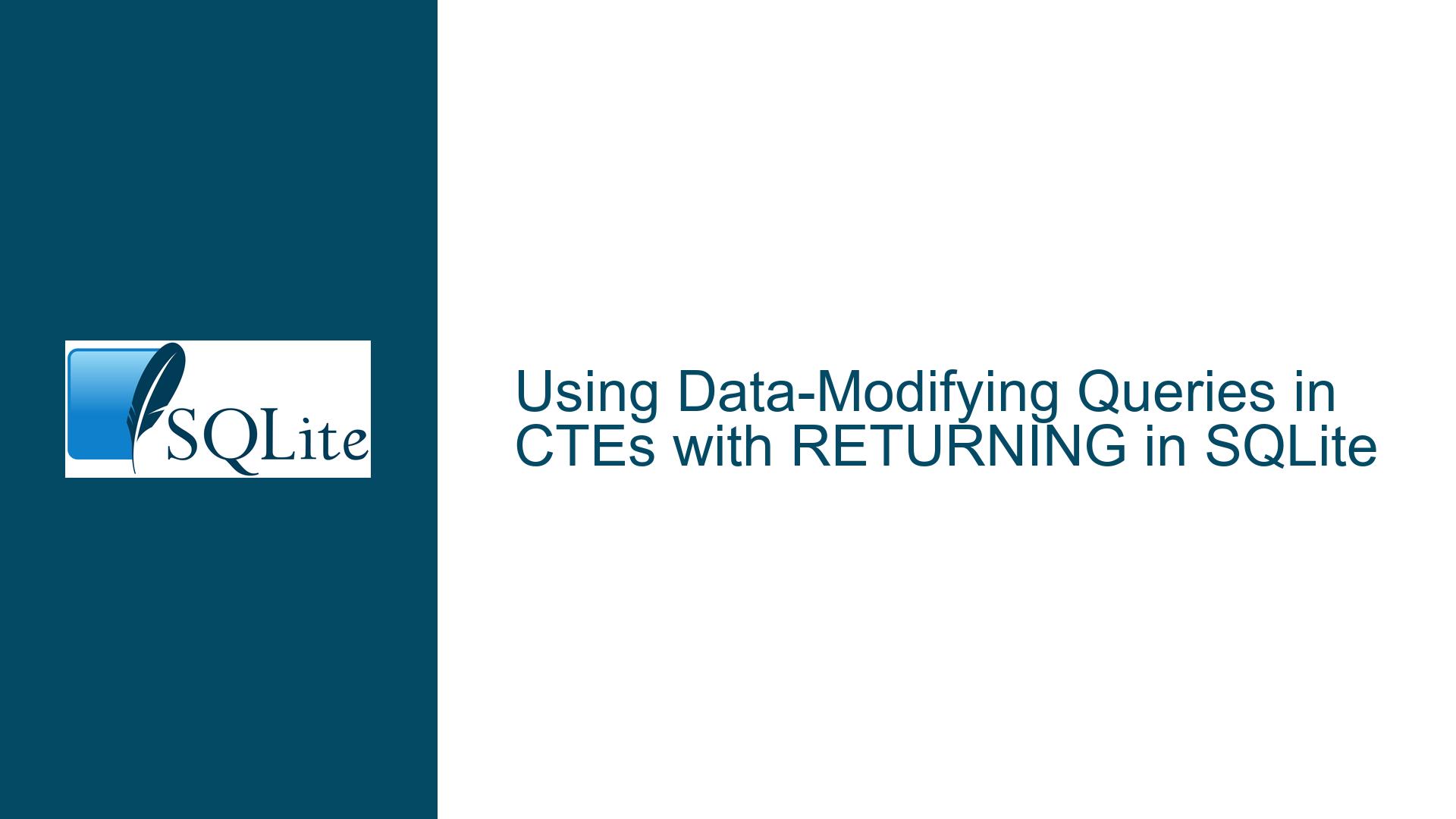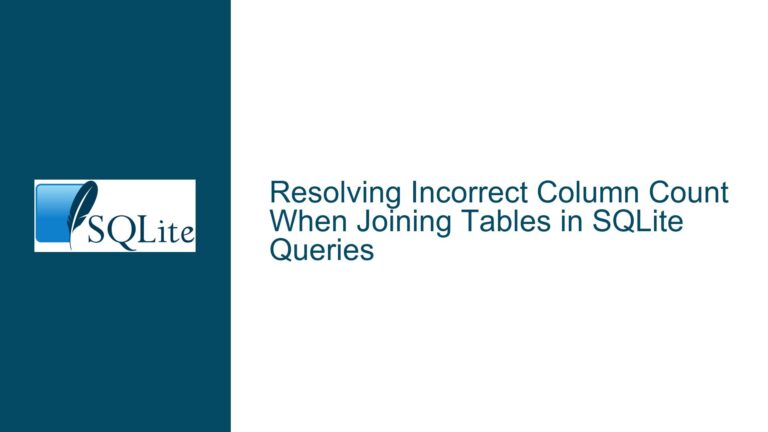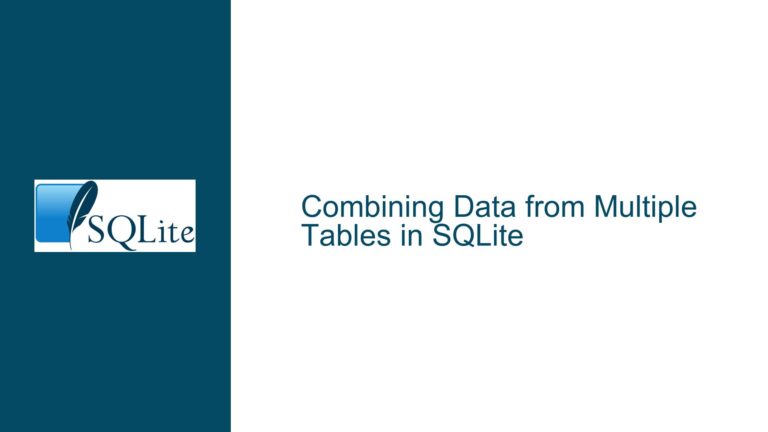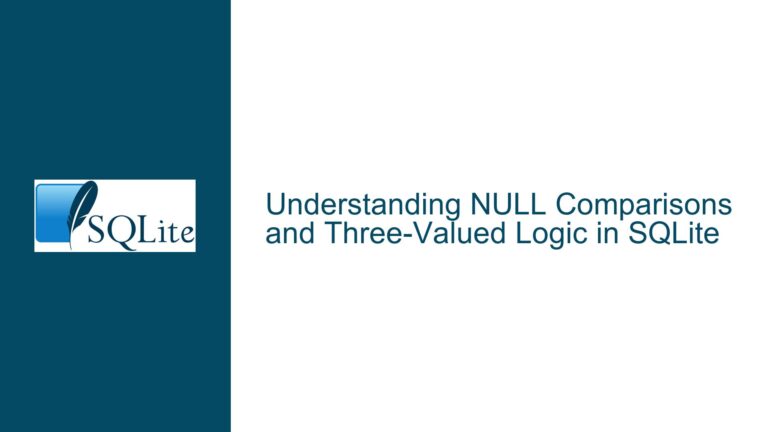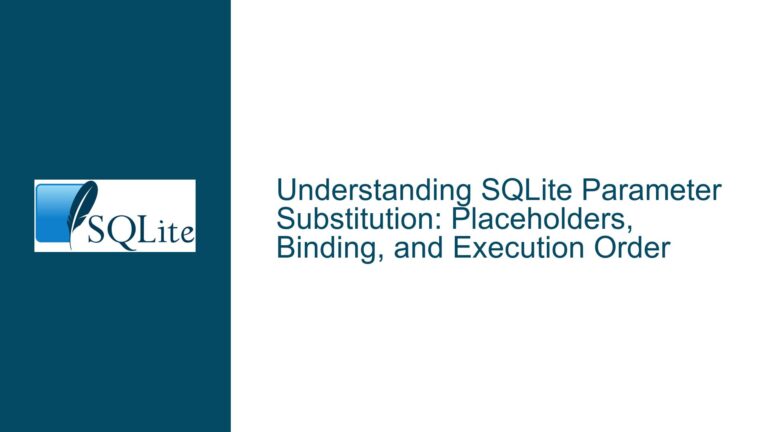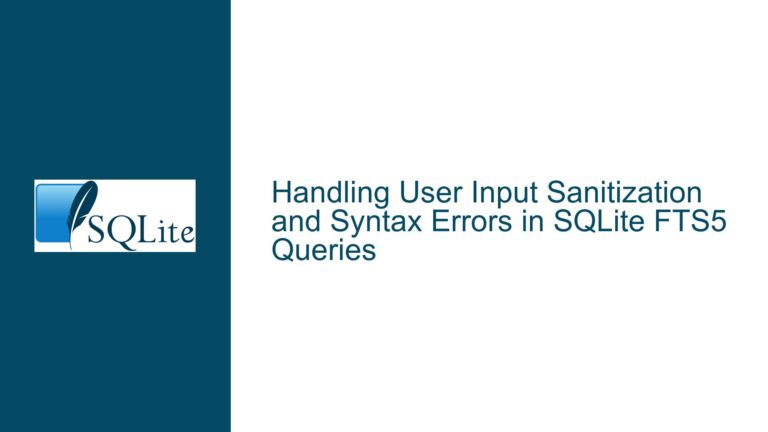Using Data-Modifying Queries in CTEs with RETURNING in SQLite
Data-Modifying Queries in CTEs: The Core Issue
The core issue revolves around the ability to use Data Manipulation Language (DML) queries, such as INSERT, UPDATE, and DELETE, within Common Table Expressions (CTEs) in SQLite, particularly when these DML queries include a RETURNING clause. The RETURNING clause, which is a relatively recent addition to SQLite, allows the query to return the rows that were affected by the DML operation. This feature is particularly useful when you need to perform a series of operations where the output of one operation is the input to another, such as moving rows from one table to another.
The discussion highlights a specific use case where rows are deleted from one table (product) and inserted into another table (archive). The user provides two examples of how this could be done in PostgreSQL, where DML queries with RETURNING clauses are allowed within CTEs. The first example deletes rows from the product table and inserts them into the archive table within a single CTE. The second example inserts rows into the archive table and then deletes them from the product table, again using a CTE.
The user is explicitly asking whether SQLite plans to support this feature, as it is currently not supported. The discussion also includes a suggestion to use a trigger as an alternative, but the user is not interested in alternatives and is specifically asking about the implementation of DML queries with RETURNING clauses within CTEs.
Why SQLite Currently Does Not Support DML Queries in CTEs
SQLite’s architecture and design philosophy play a significant role in why it does not currently support DML queries within CTEs. SQLite is designed to be a lightweight, embedded database engine that prioritizes simplicity, reliability, and performance. The implementation of complex features, such as DML queries within CTEs, requires careful consideration to ensure that these features do not compromise the core principles of SQLite.
One of the primary reasons SQLite does not support DML queries in CTEs is related to the way CTEs are evaluated and executed. In SQLite, CTEs are typically evaluated as if they were subqueries, and the results are materialized before being used in the main query. This approach works well for SELECT statements, where the result set is static and can be easily materialized. However, DML queries modify the database state, and their results are not static. Allowing DML queries within CTEs would require significant changes to the way CTEs are evaluated, potentially introducing complexity and performance overhead.
Another consideration is the transactional nature of SQLite. SQLite uses a single-writer model, where only one write operation can occur at a time. This model ensures data consistency and simplifies the implementation of transactions. However, it also means that DML queries within CTEs could lead to complex transactional scenarios, especially if multiple DML queries are executed within the same CTE. Ensuring that these scenarios are handled correctly would require additional complexity in the transaction management code.
Finally, SQLite’s development is guided by a principle of minimalism, where features are only added if they provide significant benefits and do not introduce unnecessary complexity. While the ability to use DML queries within CTEs could be useful in certain scenarios, it is not clear that the benefits outweigh the costs in terms of implementation complexity and potential performance impact.
Exploring Workarounds and Alternatives for Data-Modifying Queries in CTEs
While SQLite does not currently support DML queries within CTEs, there are several workarounds and alternatives that can be used to achieve similar results. These approaches vary in complexity and suitability depending on the specific use case, but they all aim to provide a way to perform a series of operations where the output of one operation is the input to another.
One common alternative is to use triggers, as suggested in the discussion. Triggers allow you to automatically perform an action in response to a change in the database, such as inserting a row into one table when a row is deleted from another. In the example provided, a trigger could be used to insert rows into the archive table whenever rows are deleted from the product table. This approach is simple and requires minimal code, but it may not be suitable for all scenarios, especially if the logic for moving rows between tables is complex or if the operations need to be conditional.
Another approach is to use multiple SQL statements within a transaction. This allows you to perform a series of operations in a single, atomic unit of work. For example, you could first delete rows from the product table and then insert them into the archive table within the same transaction. This approach ensures that either all operations are completed successfully, or none are, maintaining data consistency. However, it does not provide the same level of flexibility as using DML queries within CTEs, as the results of one operation cannot be directly used as the input to another.
A more advanced alternative is to use temporary tables or table-valued functions to simulate the behavior of DML queries within CTEs. For example, you could create a temporary table to store the results of a DELETE operation and then use that temporary table in an INSERT operation. This approach provides more flexibility than using multiple SQL statements within a transaction, but it also requires more code and may be less efficient.
Finally, if the use case requires complex logic that cannot be easily implemented using the above approaches, it may be necessary to use a procedural language, such as Python or Java, to perform the operations. This allows you to execute multiple SQL statements and use the results of one statement as the input to another. However, this approach introduces additional complexity and may not be suitable for all environments, especially those where SQLite is used as an embedded database.
In conclusion, while SQLite does not currently support DML queries within CTEs, there are several workarounds and alternatives that can be used to achieve similar results. The choice of approach depends on the specific requirements of the use case, including the complexity of the logic, the need for data consistency, and the performance considerations. As SQLite continues to evolve, it is possible that support for DML queries within CTEs may be added in the future, but for now, these workarounds provide a viable solution for most scenarios.
